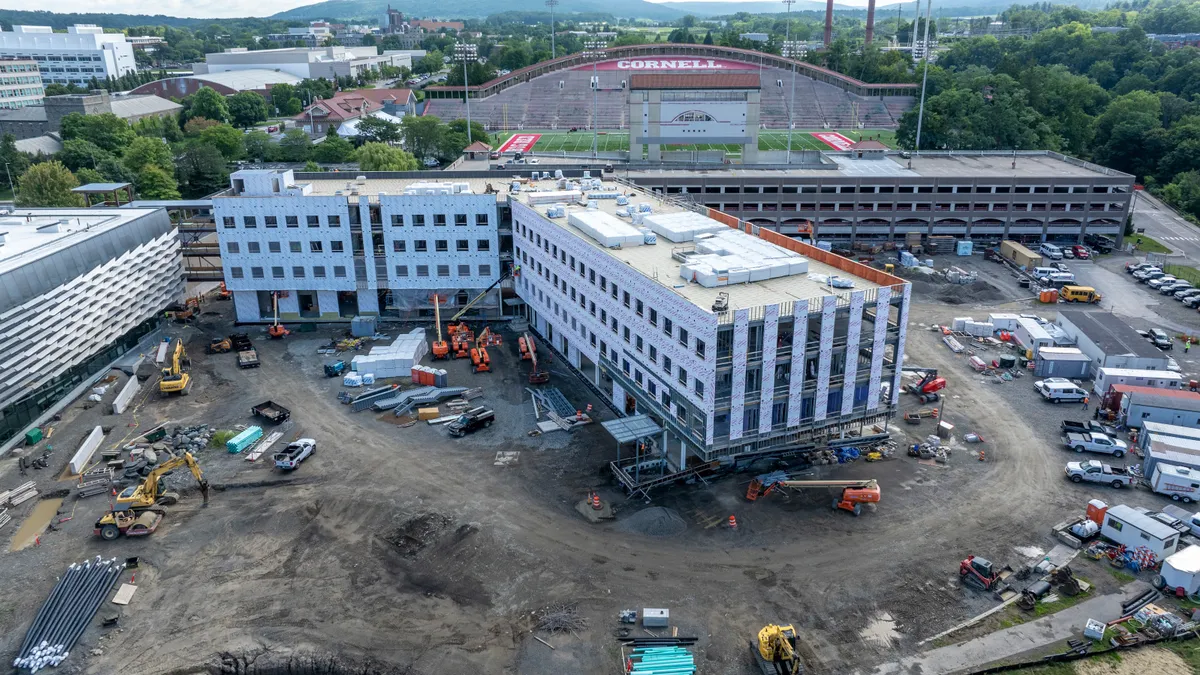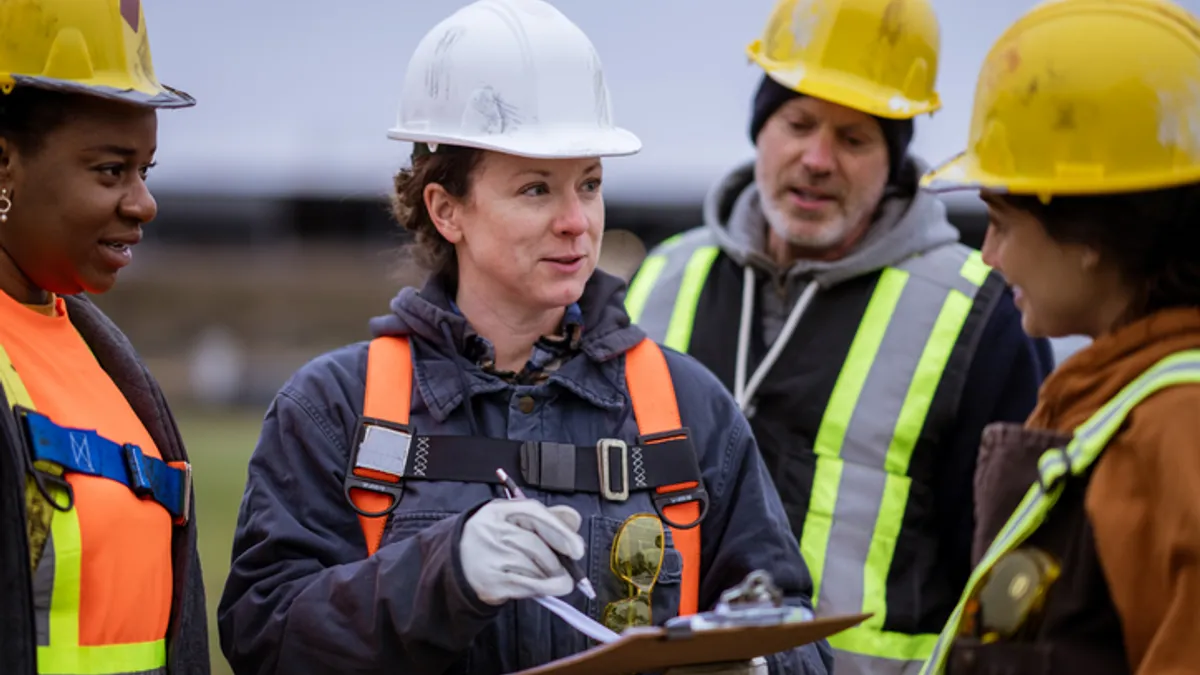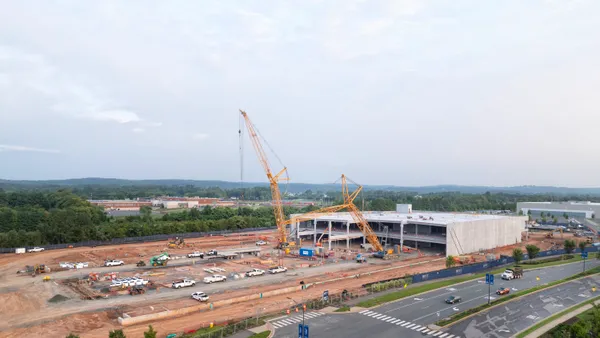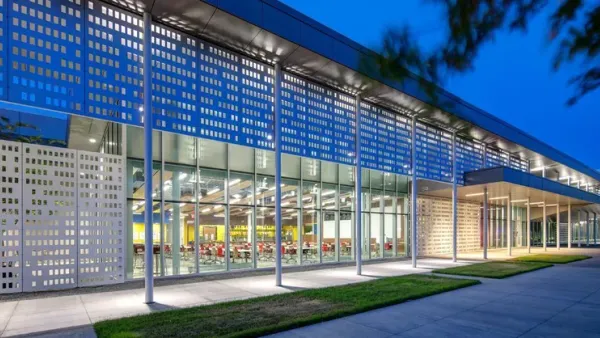The construction industry is one of the largest global markets and contributors to the economy. Within the US alone, it accounts for over 680,000 employers and approximately 7 million employees. Specialty contractors play a vital role in the industry, bringing in $750 billion in estimated annual revenues across 450,000 employers in the United States alone.
The demand for specialty contractors continues to grow as general contractors and owners look for specialists in plumbing, electrical work, welding, and more to bring their projects to life. Across the country, specialty contractors are experiencing rapid growth and success at both a national and global scale. We've compiled a hands-on slide deck of the top 15 specialty contractors in the US, based on the ENR's 2019 Top 600 Specialty Contractors list. Interested in giving it a look? Flip through the SlideShare here.
Lessons from the Best: Competitive Strategies from the Top Specialty Contractors
The top 15 specialty contractors featured above have worked hard to get and keep their names on the list above. You might be wondering, "What's their secret to success?" We've gathered some of their biggest tips and tricks for making it happen. But one thing remains the same across each company: an innovative mindset and willingness to embrace change as well as new technologies.
Rosendin: Early Adopters of Change and Innovation
It's hard to talk about electrical contractors and not mention Rosendin Electric. The San Jose-headquartered and employee-owned company is the nation's largest private electrical contractor. Rosendin has weathered the Great Depression and World War II throughout its 101 years. What's remained constant is a focus on using the latest technology. Being an early adopter of technology has paid off as Rosendin has annual revenues of approximately $2 billion.
Key adoptions include Building Information Modeling (BIM) technology in 2008 and mobile construction apps to support their remote workforce. Sam Lominica, Rosendin's then Electric CIO, spoke about the company's remote workforce technology back in 2014, "Our people work in all sorts of remote regions so we needed to create a Mobile First environment where employees could choose their own devices, a CYOD model that would support all the latest devices on any of the carriers."
Being ahead of the curve has certainly served the company well as the workforce has shifted significantly to a remote working model in recent months.
Rosendin continues to prioritize "the most proven and effective technologies" to deliver an "ongoing commitment to innovation." This commitment extends into the larger community as well. Rosendin worked alongside other general contractors and subcontractors to transform 1940s auditorium buildings in Coachella Valley into medical facilities for COVID-19 patients. The large-scale project included:
- Retrofitting and updating electrical systems in California's Riverside County Fairgrounds buildings to transform them into medical facilities
- Upgrading and creating a backup power scheme in the event of an outage
- Developing safety protocols for the above jobsites
Comfort Systems: Prefabrication Focus Leads to Efficiency and High Quality
Public company Comfort Systems provides commercial HVAC, mechanical, and electrical contracting services to businesses of all sizes across the United States. Comfort Systems has approximately 12,000 employees and revenues over $2 billion.
The company's construction and manufacturing teams work together and rely on prefabrication "to deliver the best quality and most efficient HVAC system possible, including spool fabrication and custom pipe fittings." Prefabrication allows Comfort Systems to reduce costs, increase efficiency, and offer affordable price points to customers.
The prefabrication of these system parts is done at the company's Chandler, Arizona facility. Their multilayered strategy includes the use of a coordinated model to validate estimates, set prefabrication goals for the shop, installation goals for the field, plus the Fabrication Suite of Products and BIM. Each component works together to deliver winning bids at a rapid pace.
ACCO Engineered Systems: Full Tech Stack Drives Success
ACCO Engineered Systems, an employee-owned company based in Pasadena, California, is a leading environmental firm. ACCO was founded in 1934 as an HVAC company. Over the last 86 years, the specialty contractor has expanded to include plumbing, process piping, sheet metal, skid manufacturing, industrial piping, building automation controls, and mechanical services.
ACCO utilizes BIM to bridge the gap between engineering and construction. The technology allows ACCO to cross-collaborate across departments, improve workflows, and eliminate costly rework.
ACCO's, BIM Manager, Steve Whitmer, recently spoke with Autodesk about his passion for BIM and using technology for complex projects. He shared that BIM is central to operations at ACCO and its data management. The technology supports the company as a whole as Whitmer explains, "It started for us in construction and engineering, but there is not any reason why BIM cannot be spun out to the other specialties. That is what really excites me about the future of BIM. In this digital era, there is no reason why we cannot take more value out of this data that is sitting in models and expediting workloads."
ACCO's technology suite contains many more tools such as Virtual Design and Construction (VDC) and three-dimensional CAD visualization software. These tools help general and subcontractors coordinate on HVAC, process, and plumbing projects from any location.
Cupertino Electric: Building Leaders through Training and Tech
Cupertino Electric, Inc. is a private electrical engineering and construction company headquartered in San Jose, California. Founded in 1954 in its namesake city of Cupertino, the company has grown to employ over 3,800 field and office workers throughout the Western United States.
The company does more than provide electrical installation, engineering, and energy services. Cupertino also builds data centers for some of the world's largest tech companies, supplying the infrastructure needed to innovate.
Known for their commitment to workforce development, Cupertino Electric focuses on "delivering technically-complex projects fast without compromising quality or safety." They achieve this goal in part by developing leads through their Foreman Development program. Cupertino Electric's CEO was quoted in ENR as saying that the program "builds leadership skills from within company ranks" and ensures "an available bench of talent."
Nick McComb, Superintendent at Cupertino Electric, is a great example of the company's commitment to leadership development. Beginning as an apprentice, McComb rose the ranks to superintendent through positions as journeyman wireman, foreman, general foreman, and site superintendent. Cupertino's investment in its workers certainly pays off as employees develop the skills they need to solve challenges through training and technology.
Adoption of New Tech Essential to Conquering Upcoming Challenges
Sub and general contractors alike continue to build innovation into their strategies to overcome obstacles and innovate in new markets. While specialty contractors will certainly face new challenges this year and beyond, it's safe to say that the winners will include continuous improvement and early adoption of emerging technologies in their toolkits.










